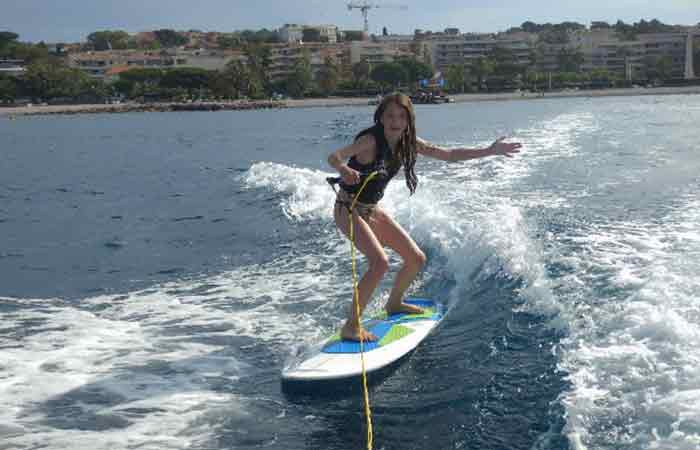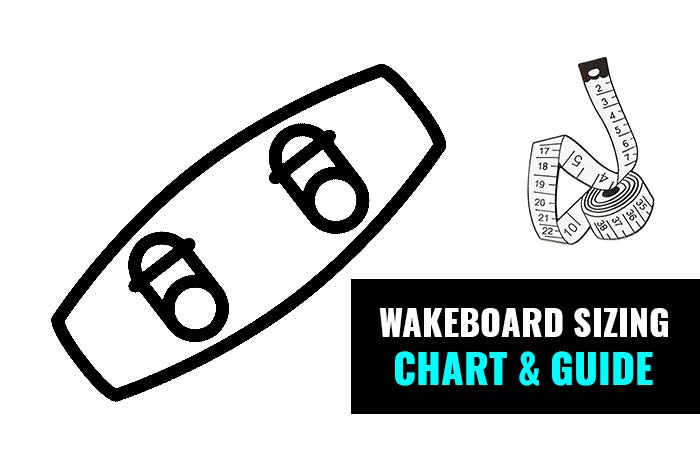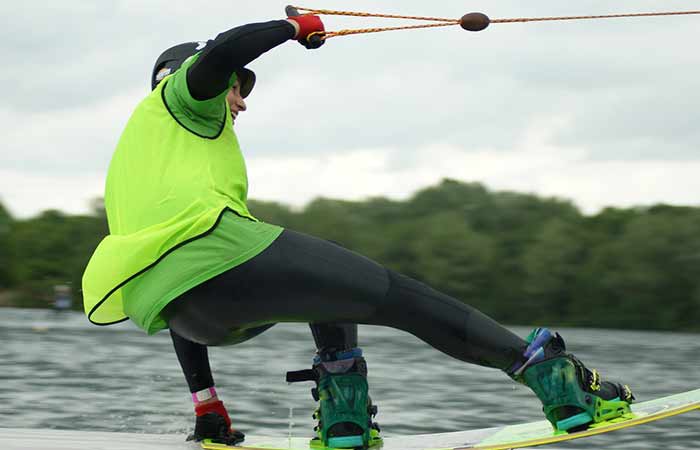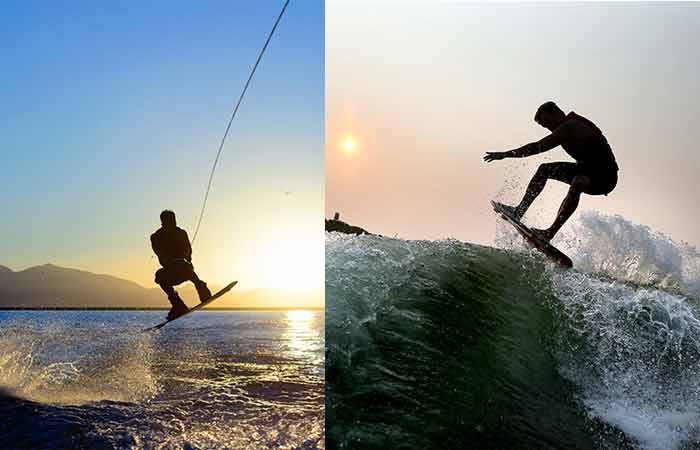Wakeboard Tricks & Names: Easiest to the Hardest
Once you can get up on your board and balance as you glide on the water, it’s time to progress to the more thrilling aspect of wakeboarding – performing wakeboard tricks. Ideally, you should start with the easier beginner tricks before you proceed to the more complex intermediate and advanced tricks.
Beginner tricks will help your master the foundational skills needed to perform the more intricate tricks. The intermediate and advanced wakeboard tricks can be quite risky if you haven’t mastered the core wakeboarding skills. Here are some of the most exciting wakeboard tricks, starting from the easiest to the hardest:
Beginner Tricks
Beginner tricks are ideal for wakeboarders who’re just getting their feet wet; those who’re just learning to execute easy rotational tricks and get air.
Ollie
Ollie is a foundational trick. Once you’ve mastered it, learning more complex tricks becomes much easier. To execute an ollie, you need to jump across a buoy.
As you approach a buoy, bend your knees and shift your weight to your heels. Then lift both of your legs simultaneously as you pop. You may choose to let go with your rear hand as this ensures your body remains sideways. On landing, you should bend your knees to absorb the shock.
Surfing the Wake
Learning to surf the wake (the fluffy waves created by a towing boat) is a foundational skill for the more complex wakeboard tricks. To surf a wake, hold the handle using your inside hand. You should then start riding heelside with the change of edge. Then, generate a big spray by forcefully curving from side to side.

Surface 180
This trick entails rotating your board 180 degrees. You don’t get to bounce off the water surface, which makes it ideal for beginners who’re just learning to navigate the wakeboard.
First, you should bend your knees, lock your elbows into your body, and spin your board by either shifting your weight to your heels or by rotating your hips. Once your board turns to face the other direction, you should ride backward or in switch. You can ride in switch in two ways – heelside/backside or toeside/frontside.
When riding heelside, you should spin by turning your chest away from the towboat; when riding toeside, your chest should turn towards the boat as you spin.
Cross the Wake
This is a nice trick to attempt after you’ve learned to surf the wake and control your wake. First, Lean into your heel and toe edges and pull your tow rope. With this move, your board will spin. Fluidity is essential when you want to carve.
You should face the direction you’re heading and turn your chest and shoulders to the boat. Then shift your handle to the inside of your front hip.
Each of your movement should be controlled and slow. With your knees bent, glide through the water. Steering with your tow rope will make you tumble. So you should only move your lower body and soon you’ll be crossing the wake.
To cross to the other side of the wake, shift your weight to your toes and turn your hips and shoulder to the direction you want to head. If you’re gliding directly behind your towboat, you can shift direction by trailing the other wake. For you to continually cross the wake, repeat these actions.
Jumping the Wake
To jump the wake, cut towards the wake and steadily increase your speed as you approach. With the handle positioned in front of your hip and knees bent, rise to a standing position as you reach the wake. This will give you the momentum needed to pop. You will then get some air, and depending on your thrust, you may clear the wake.
Importantly, you should shift your rope to the front of your hip (load the line). This will ensure the rope is tight and your arms are in as you land. When landing, you should simultaneously bend your knees, and then continue sliding over the water.
If you give it another go, cut out from the wake, and go to the furthest you can; stay there for a few moments. Once the boat starts tugging, turn and cut in toward the wake. You should ideally master smaller jumps before you proceed to bigger jumps with the wake serving as your ramp.
Intermediate Tricks
These are tricks for wakeboarders who’ve grasped the basics and now want to move on to simple inverts and difficult rotational tricks and grabs.
The Scarecrow
The scarecrow is essentially a frontside 180 coupled with a frontside front roll. It sounds complex but it can be a pretty easy trick for a lot of people, compared to a front roll.
To pull off a scarecrow, edge out wide and then glide back toward the wake with your handle held close to the front of your leading hip. Your chest should be up and your shoulders should be perpendicular to the wake.
As you reach the wake, stand tall and turn your head so that it faces the boat while you’re looking over the front shoulder. This move will shove your chest forward and instigate a rotation.
You’ll get a sense that you leaping into the wake. Once you turn around, you should be able to zero in on your landing spot. Your handle should be close to your body all through the rotation. Besides, you should hang on the handle with both of your hands. The scarecrow is a super fun trick.
Tantrum
A tantrum is essentially a backflip. This heel-side invert is the basis of numerous advanced tricks. The fastest way to master the tantrum is to learn how to backflip into a pool or a trampoline. This will teach you how to spot landings and increase your air awareness.
Once you can backflip on land, it’s time to attempt it behind a boat. First cut out wide, similar to when you want to execute the scarecrow. Then, with a slightly aggressive edge, approach the wake. Performing this trick will be easier when you have considerable height.
As you’re about to ascend the wake, shift weight from the edge and turn your shoulders so that they are perpendicular to the wake. To pull this off, remove your backhand from the handle and then raise it above your head and throw it to your side, like a kid is throwing a tantrum.
With this move, you will flip backward with your feet flying over your head. Once you’re airborne, you should maintain a backward gaze until you see the water. Once you can see the water, prepare for landing – chest up, shoulders strong, and knees bent. With that, you’d have performed your first tantrum.
Advanced Tricks
These are tricks for seasoned wakeboarders who can handle difficult spins and inverts combined with grabs.
Tantrum to Blind
This trick, like most advanced tricks, requires skill and finesse. You should be able to pull off the Tantrum and the 180 rotation before your try the Tantrum to Blind.
To perform the Tantrum to Blind, glide toward the wake with a level of momentum that can allow you to execute a basic Tantrum. You shouldn’t land too far off; ideally, you should land on the wake’s downside.
Stand tall so that you get the maximum height once you pop. Your handle should be tight to your body during the whole trick. Besides, your back should be facing the boat a bit more than in a normal tantrum. This reduces rope tension as you land.
You should also avoid spinning to blind too soon. Turn only after you’re ascending and you’ve chosen a landing spot. As you touch down, your rope should be close to the lower part of your back. You should land with most of your weight balanced on your toes; you should then shift it to your heels. You should also turn your shoulder to the front side edge, and after you’ve landed you should pass the handle.
The Whirlybird
The Whirlybird is a combination of a Tantrum and a 360-degree backside turn. But in this case, instead of a handle pass, you get to keep the rope over your head.
To execute a Whirlybird, you should approach the wake as you would when performing a normal tantrum. Cut in with a strong edge and be ready to stand tall as you approach the wake.
As you stand tall atop the wake, twist your body a bit and then do a tantrum; your back should be turned slightly toward the boat. This will give you some rope slack.
The handle should be tight and your arm should be bent. Set off the rotation by flinging your head, shoulder, and arm away from your towing boat. Let your elbow and arm remain in the air for longer. If your arm goes down prematurely, your rotation will only be 180 degrees. As your legs level up with your upper body, look out for a landing spot.
Then, lower your arm to stop the rotation so that you can land. You should then touch down just as you would in a tantrum.
Further Reading on Wakebording
- How to Wakeboard: A Basic Beginner Guide +Tips
- How to Jump on a Wakeboard
- How to Get Up on a Wakeboard
- Wakeboarding vs Wake Surfing
- How to Pick the Right Wakeboard Size-Chart & Guide
- 7 Best Wakeboards + Buy Guide
- Best Wakeboard Life Jackets & Vests for Women, Men & Kids
- Best Wakeboard Bindings & Boots
- 7 Best Wakeboard Towers-What to look for when Buying






![7 Best Wakeboards + Buy Guide [2021]](https://aquaticglee.com/wp-content/uploads/2021/01/best-wakeboards.jpg)